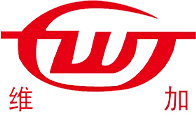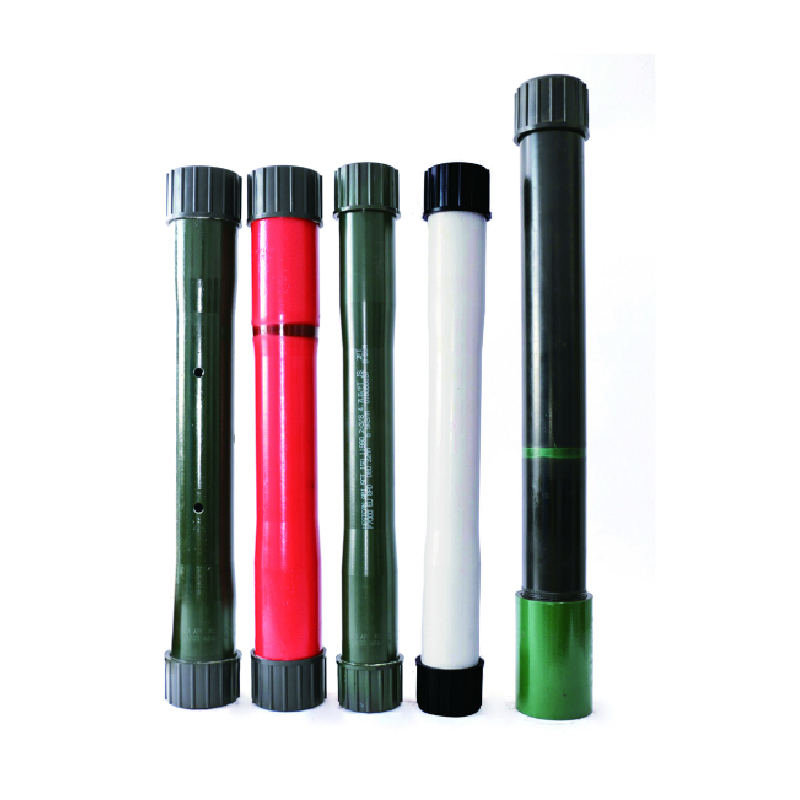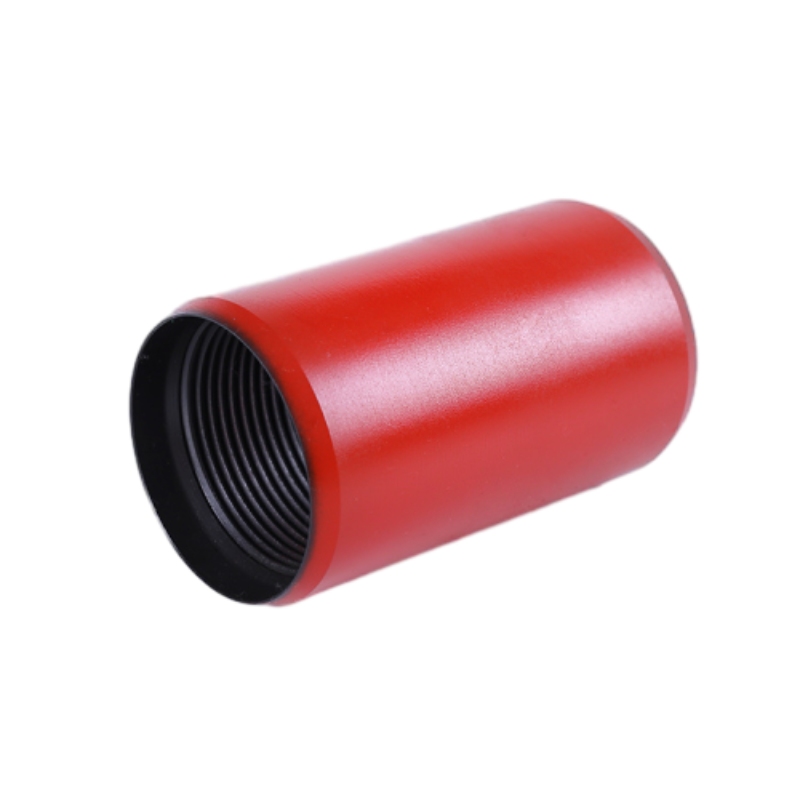Pup Joint Manufacturers: High-Quality Tubing & Casing for Oil & Gas
The Crucial Role of pup joint manufacturers in Oil & Gas Production
In the intricate architecture of oil and gas wells, precision and reliability are paramount. Among the many specialized components, pup joints play a critical role in ensuring the integrity and functionality of tubing strings. These short length pipes, typically ranging from 2 to 12 feet, are indispensable for spacing out tubing in wells, enabling accurate setting of downhole tools, and connecting different sections of the tubing string. The demanding conditions of downhole environments necessitate that pup joints meet stringent specifications for material strength, dimensional accuracy, and corrosion resistance. Therefore, selecting reputable manufacturers is not merely a choice but a critical operational imperative for safety, efficiency, and longevity in energy exploration and production.
This article delves into the world of pup joint manufacturing, exploring the technical intricacies, industry applications, and the strategic advantages offered by leading manufacturers. We aim to provide B2B decision-makers and engineers with comprehensive insights into the factors that define quality and reliability in these essential components.
Detailed Manufacturing Process of Pup Joints
The production of high-quality pup joints is a multi-stage process, meticulously controlled to meet API 5CT standards and ensure optimal performance in harsh downhole conditions. From raw material selection to final inspection, every step is critical.
1. Material Selection and Preparation
The foundation of a durable pup joint lies in its material. Pup joint manufacturers primarily utilize seamless steel tubing conforming to API 5CT specifications, commonly grades such as J55, K55, N80, L80, P110, and Q125. These grades are chosen for their specific yield strength, tensile strength, and hardness properties suitable for various well conditions. Materials are sourced from certified mills, undergoing initial chemical analysis and mechanical testing to verify compliance.
- API 5CT Grades: J55 (55,000 psi min yield), K55 (55,000 psi min yield, typically higher tensile), N80 (80,000 psi min yield), L80 (80,000 psi min yield, often with limited hardness for sour service), P110 (110,000 psi min yield).
- Corrosion Resistance: For highly corrosive environments, specialty alloys or internally coated pup joints are selected.
2. Cutting and Forging
The selected seamless tubing is precisely cut to the required pup joint lengths, typically ranging from 2ft to 12ft, in increments of 1ft or 2ft as per API 5CT. The ends of the cut pipe are then often upset forged. Upsetting increases the wall thickness at the ends, providing additional material for threading, which enhances joint strength and resistance to thread galling. This forging process is critical, particularly for premium connections or when higher pressures are anticipated.
3. Heat Treatment
Heat treatment is essential for achieving the desired mechanical properties, such as hardness, strength, and toughness. Quenching and tempering (Q&T) processes are applied, which involve heating the steel to a high temperature, rapidly cooling it (quenching), and then reheating it to a lower temperature (tempering). This refines the grain structure and ensures the material meets the specific API grade requirements, improving its performance envelope, particularly crucial for tubing pup joint applications.
4. CNC Threading and Machining
High-precision Computer Numerical Control (CNC) machining is employed to cut the threads on both ends of the pup joint. This ensures exact conformity to API 5B specifications for casing and tubing threads, or proprietary designs for premium connections. Common thread types include External Upset End (EUE), Non-Upset End (NUE), and various premium connections offering enhanced sealability and strength. The threading process is rigorously monitored for pitch diameter, taper, lead, and thread form to ensure perfect make-up with other tubing string components.
- EUE (External Upset End): Thicker wall at the joint, increasing connection strength.
- NUE (Non-Upset End): Same wall thickness throughout, cost-effective for lower pressure applications.
- Premium Connections: Proprietary designs offering gas-tight seals, higher torque resistance, and superior fatigue life.
5. Surface Treatment and Protection
Post-machining, pup joints undergo cleaning and surface treatment. This may include shot blasting to remove scale and prepare the surface for coatings. Phosphate coatings are often applied to provide initial corrosion protection and act as a lubricant during make-up. Thread protectors are then fitted to prevent damage during transportation and handling. For enhanced corrosion resistance, especially for pup joint oil and gas applications in sour service or CO2-rich environments, internal plastic coating (IPC) or other specialized corrosion-resistant alloys may be specified.
6. Stringent Quality Control and Testing
Quality assurance is integral throughout the manufacturing process, with multiple inspection points:
- Dimensional Inspection: Verification of length, outside diameter, wall thickness, and thread dimensions using calibrated gauges.
- Non-Destructive Testing (NDT): Eddy current, ultrasonic, or magnetic particle inspection to detect surface and subsurface flaws.
- Hydrostatic Testing: Each pup joint is subjected to internal pressure testing to verify its structural integrity and leak resistance, typically to 80% of its specified minimum yield strength.
- Chemical and Mechanical Property Verification: Material test reports (MTRs) confirm chemical composition and mechanical properties (yield, tensile, hardness).
- Visual Inspection: Final check for any surface imperfections, proper thread protection, and clear stenciling (API monogram, grade, size, length, manufacturer).
Compliance with international standards such as ISO 9001 for quality management and API Q1 for petroleum and natural gas industries is a hallmark of reliable pup joint manufacturers. These rigorous testing protocols ensure a robust service life and demonstrate advantages in corrosion resistance and structural integrity, contributing to energy saving by preventing costly failures and downtime in typical application scenarios.
Industry Trends and Market Dynamics
The oil and gas sector is continuously evolving, driven by technological advancements, environmental regulations, and fluctuating global energy demands. For pup joint manufacturers, several key trends are shaping production and procurement strategies:
- Increasing Demand for High-Strength and Corrosion-Resistant Alloys: As exploration moves into more challenging environments (e.g., ultra-deepwater, high-pressure/high-temperature HPHT, sour gas fields), there is a growing need for pup joints made from advanced materials like chrome steels (e.g., 13Cr, Super 13Cr) and nickel-based alloys, offering superior resistance to H2S, CO2, and chlorides.
- Focus on Digitalization and Automation: Advanced manufacturing techniques, including AI-driven quality control and robotic threading, are improving precision, reducing lead times, and minimizing human error. Digital twins and predictive maintenance are also gaining traction.
- Sustainability and Environmental Compliance: Manufacturers are increasingly adopting greener production processes, optimizing energy consumption, and implementing stricter waste management. Clients also prioritize suppliers with robust environmental management systems.
- Supply Chain Resilience: Geopolitical events and global disruptions have highlighted the importance of robust, diversified supply chains. Manufacturers are investing in localized production capabilities and strategic stockpiling to ensure consistent availability.
- Integration of IoT and Data Analytics: Real-time monitoring of manufacturing parameters and product performance in the field allows for continuous improvement and tailored solutions.
These trends underscore a move towards higher performance, greater efficiency, and enhanced reliability, which directly impacts the specifications and offerings of leading pup joint manufacturers.
Technical Specifications and Product Parameters
Understanding the technical parameters is crucial for selecting the correct pup joint for any given application. Tubing pup joints are engineered to precise specifications to ensure compatibility and performance within the larger tubing string.
Standard Tubing Pup Joint Specifications
The following table outlines typical specifications for standard tubing pup joints, adhering to API 5CT and API 5B standards. These are essential for any operator considering pup joint manufacturers for their drilling and production needs.
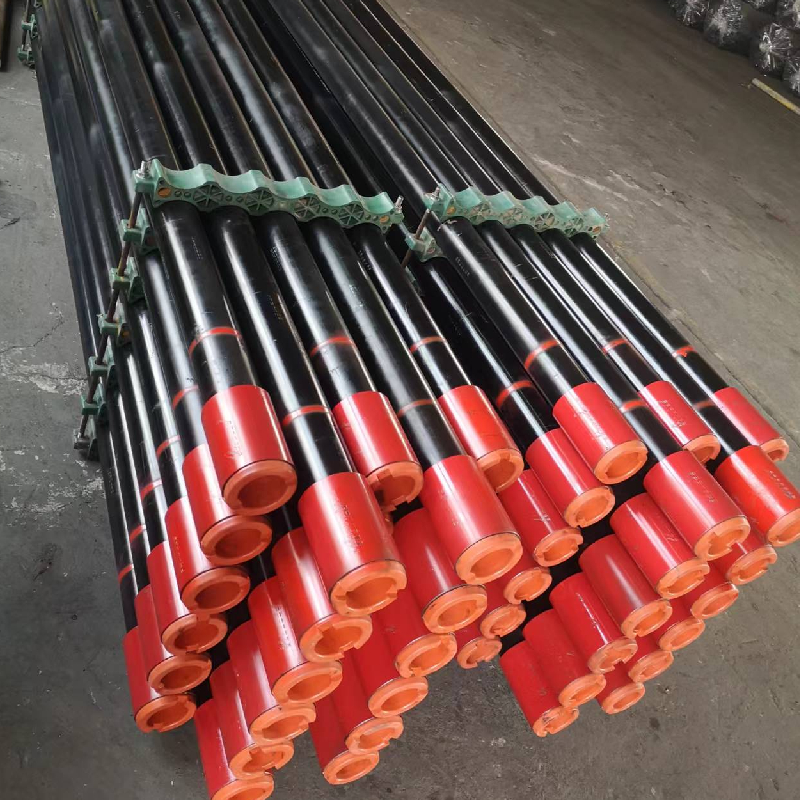
| Parameter | Typical Range/Value | API Standard |
|---|---|---|
| Outer Diameter (OD) | 2-3/8" (60.3 mm) to 4-1/2" (114.3 mm) | API 5CT |
| Length | 2 ft to 12 ft (0.61 m to 3.66 m) in 1 ft increments | API 5CT |
| Steel Grade | J55, K55, N80 (Type 1 & Q), L80 (Type 1, 9Cr, 13Cr), P110, Q125 | API 5CT |
| Wall Thickness | Standard, Heavy Wall (based on OD & weight) | API 5CT |
| Connection Type | EUE (External Upset End), NUE (Non-Upset End), Premium Connections (e.g., VAM, TenarisHydril) | API 5B (for EUE/NUE) |
| End Finish | Pin x Box (P&B) | API 5CT |
| Test Pressure (Hydrostatic) | Up to 10,000 psi (69 MPa) depending on grade/size | API 5CT |
| Internal Coating | Optional: Epoxy, Phenolic, Polyurethane, or other custom IPC | N/A (Client Spec) |
Note: Specific parameters may vary based on manufacturer, client requirements, and specific API license limitations. Always consult product data sheets.
Application Scenarios for Tubing Pup Joints
Pup joints are versatile components essential in various phases of oil and gas operations. Their primary function revolves around providing precise spacing and connections within the tubing string.
- Spacing Out Tubing Strings: This is the most common application. Tubing pup joints of various lengths are used to precisely adjust the total length of the tubing string, ensuring that downhole tools (e.g., packers, landing nipples, safety valves) are accurately positioned at their intended depths. This precision is critical for effective well completion and production operations.
- Connecting Different Tubing Sections: When standard length tubing joints need to be combined or when a custom length is required, pup joints bridge the gap, maintaining the integrity and pressure containment of the entire string. This is particularly relevant in complex well designs, including horizontal and deviated wells.
- Flow Control and Pressure Isolation: In conjunction with specialized components like nipples and mandrels, pup joints facilitate the installation of various flow control devices, such as chokes, plugs, and gauges, for optimized production and monitoring.
- Well Intervention and Workovers: During well maintenance or workover operations, pup joints are invaluable for adjusting the length of workover strings, enabling tools to be set and retrieved accurately, and facilitating repairs or modifications.
- High-Pressure and Corrosive Environments: In pup joint oil and gas applications where high pressure, high temperature, or corrosive fluids (e.g., sour gas, high CO2 content) are present, specialized pup joints made from corrosion-resistant alloys (CRAs) or those with internal plastic coatings are deployed to prevent material degradation and ensure long-term well integrity.
The versatility and precision offered by these components make them indispensable across the upstream energy sector, influencing efficiency and safety from drilling to abandonment.
Technical Advantages Offered by Leading Pup Joint Manufacturers
Choosing the right pup joint manufacturers can significantly impact operational efficiency and safety. Leading manufacturers provide distinct technical advantages that set their products apart:
- API Monogram & ISO Certifications: Adherence to API 5CT, API 5B, and ISO 9001:2015 standards signifies rigorous quality control, consistent manufacturing processes, and reliable performance. Products bearing the API monogram are trusted worldwide.
- Superior Material Selection & Metallurgy: Access to a wide range of API grades (J55 to Q125) and specialized CRAs, combined with advanced metallurgical expertise, ensures optimal material properties for specific well conditions, including resistance to H2S and CO2.
- Precision CNC Machining: State-of-the-art CNC equipment guarantees highly accurate threads (EUE, NUE, and premium connections), minimizing galling, maximizing connection strength, and ensuring gas-tight seals. This precision extends service life and reduces the risk of leaks.
- Advanced Heat Treatment Processes: Controlled quenching and tempering processes optimize mechanical properties, enhancing strength, toughness, and ductility, which are critical for resisting stress corrosion cracking and fatigue.
- Comprehensive NDT & Hydrostatic Testing: Each pup joint undergoes thorough non-destructive examination and hydrostatic pressure testing to verify structural integrity, detect flaws, and confirm pressure containment capabilities far exceeding operational requirements.
- Customization Capabilities: The ability to produce pup joints in non-standard lengths, with specific end finishes, or with internal coatings (e.g., for corrosion or paraffin control) provides flexibility for unique well designs and operational challenges.
- Enhanced Traceability: Robust tracking systems from raw material to finished product, including detailed Material Test Reports (MTRs) and individual serial numbers, ensure complete accountability and compliance.
These advantages translate directly into increased operational safety, reduced non-productive time (NPT), and lower total cost of ownership for energy companies globally.
Vendor Comparison: Key Differentiators
When evaluating pup joint manufacturers, several factors distinguish top-tier suppliers. This comparison focuses on critical aspects that influence purchasing decisions for B2B clients.
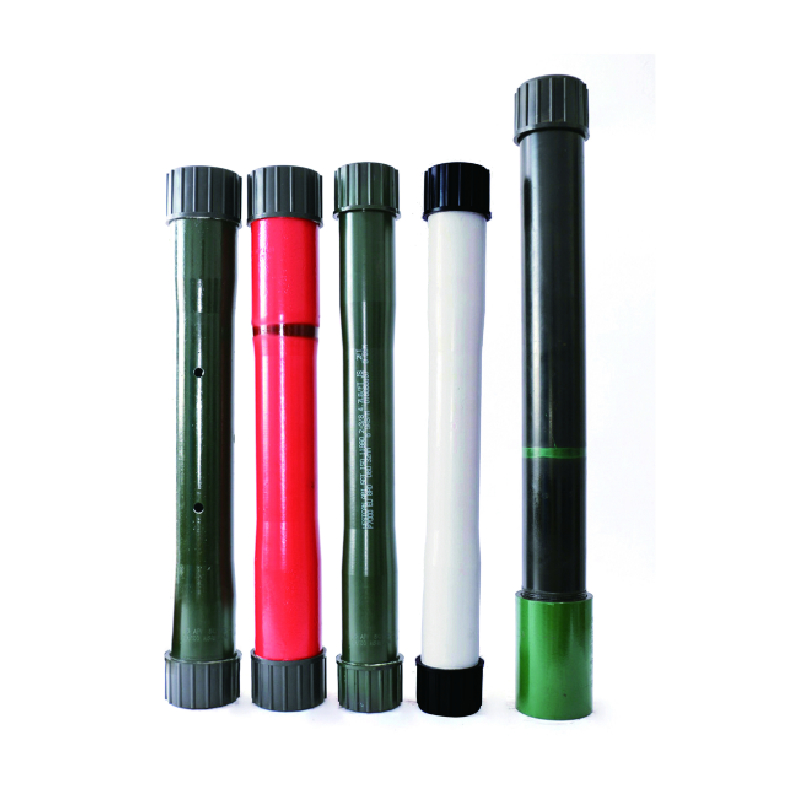
| Feature/Criterion | Leading Manufacturer (e.g., WJ Petroleum) | Standard Manufacturer |
|---|---|---|
| Certifications | API 5CT, API 5B, ISO 9001:2015, (e.g., GOST for specific markets) | May have ISO 9001, limited API Monogram licensing |
| Material Range | Extensive: J55 to Q125, incl. full range of L80 types (9Cr, 13Cr), premium CRAs | Limited: Typically J55, K55, N80 (Type 1) |
| Threading Accuracy | Superior CNC precision, supports API and proprietary premium connections with gas-tight seals | Standard API 5B, may lack premium connection expertise or tooling |
| Quality Control | 100% NDT (Eddy Current, Ultrasonic, MPI), 100% Hydrostatic Testing, comprehensive traceability | Batch testing, less comprehensive NDT, may rely solely on basic hydrostatic test |
| Customization | High flexibility for custom lengths, materials, coatings, special end finishes | Limited customization, primarily standard API lengths and grades |
| Lead Time | Optimized production, global logistics network, reliable delivery schedules | Variable, potentially longer for non-standard items, less robust logistics |
| Technical Support | Dedicated engineering support, application guidance, post-sales service | Basic product information, limited application engineering |
The ability to consistently deliver high-quality, customized, and thoroughly tested tubing pup joint products, backed by robust support, is what truly differentiates a leading manufacturer in the competitive oil and gas market.
Customized Solutions and Client-Specific Offerings
Recognizing that no two wells are identical, leading pup joint manufacturers excel in providing bespoke solutions. This capability ensures that specific operational challenges are met with precisely engineered components.
- Non-Standard Lengths: While API offers standard lengths, many applications require intermediate or very short pup joints to achieve exact spacing. Manufacturers offer precision cutting and threading for lengths outside the standard 2, 4, 6, 8, 10, 12 ft ranges.
- Specialized Material Grades: Beyond common API grades, custom solutions include pup joints made from specific Corrosion-Resistant Alloys (CRAs) or high-collapse resistant materials tailored for ultra-deepwater or highly corrosive sour service environments.
- Proprietary Connections: Integration with client-specific premium thread designs requires highly specialized machining capabilities and a deep understanding of thread geometry and performance.
- Internal Coatings: For wells producing corrosive fluids or subject to scale/paraffin buildup, custom internal plastic coatings (IPC) like phenolic, epoxy, or urethane are applied to extend the service life of pup joint oil and gas components and maintain flow efficiency.
- Enhanced Testing Protocols: Some projects demand testing beyond API minimums, such as higher hydrostatic pressures, specific fatigue tests, or advanced NDT methods. Custom manufacturers can accommodate these rigorous requirements.
- End Finish Customization: While Pin x Box is standard, specific applications may require different end connections or special protectors for unique handling or deployment systems.
This ability to customize reflects a deep engineering capability and a client-centric approach, empowering operators to optimize their well designs and achieve superior performance.
Application Case Studies: Real-World Impact
The practical deployment of high-quality pup joints demonstrates their critical value in optimizing well operations.
Case Study 1: Deepwater HPHT Gas Well Completion
Challenge: An operator in the Gulf of Mexico was completing a deepwater, high-pressure, high-temperature (HPHT) gas well. The completion string required precise spacing of a hydraulic packer and a subsurface safety valve at depths exceeding 20,000 feet, with anticipated bottomhole temperatures over 350°F and pressures above 15,000 psi. The environment also contained significant H2S and CO2.
Solution: A leading pup joint manufacturers supplied custom-length tubing pup joint made from API P110 steel, further enhanced with a 13Cr material for critical sections, and featuring premium gas-tight connections. Each pup joint underwent additional ultrasonic inspection and a heightened hydrostatic test pressure (12,000 psi) to ensure absolute integrity. Custom lengths (e.g., 3.5 ft, 7.2 ft) were precisely manufactured to ensure accurate tool setting.
Outcome: The precise manufacturing and rigorous testing of the custom pup joints ensured flawless integration into the completion string. The tools were set accurately on the first attempt, preventing costly rig time overruns. The enhanced metallurgy and premium connections provided exceptional resistance to the HPHT and corrosive conditions, guaranteeing long-term well integrity and operational safety for this crucial pup joint oil and gas application.
Case Study 2: Mature Field Water Injection String Optimization
Challenge: A mature onshore field required optimization of its water injection wells. The existing injection strings suffered from significant internal corrosion and scale buildup, leading to reduced injection rates and frequent workovers. The operator sought a cost-effective solution to extend the life of the strings and improve injection efficiency.
Solution: The chosen pup joint manufacturers provided standard API J55 pup joints, but with a specialized internal epoxy coating. This internal plastic coating (IPC) was selected for its proven resistance to the injected water chemistry and its ability to inhibit scale adhesion. The pup joints were supplied in a mix of 2ft, 4ft, and 6ft lengths to facilitate spacing within the existing injection tubing, ensuring that no un-coated pipe sections were left exposed.
Outcome: The internally coated pup joints significantly extended the service life of the injection strings, reducing the frequency of workovers by over 40% in the first two years. This resulted in substantial cost savings from reduced rig time, minimized replacement component costs, and improved injection rates that positively impacted reservoir pressure maintenance. This demonstrated the tangible benefits of selecting a manufacturer capable of delivering customized corrosion protection.
Frequently Asked Questions (FAQ)
Q1: What is the primary difference between EUE and NUE pup joints?
A: EUE (External Upset End) pup joints have ends that are forged to be thicker than the pipe body, which allows for deeper and stronger threads. This makes them suitable for higher pressure applications. NUE (Non-Upset End) pup joints maintain the same wall thickness throughout the pipe body and at the ends, offering a more economical option for lower pressure or less demanding applications where connection strength is less critical.
Q2: How are pup joints tested for quality assurance?
A: Quality pup joints undergo rigorous testing including dimensional inspection (length, OD, wall thickness, thread parameters), non-destructive testing (NDT) such as Eddy Current, Ultrasonic, or Magnetic Particle Inspection to detect flaws, and hydrostatic pressure testing to verify structural integrity and leak resistance. Material Test Reports (MTRs) confirm chemical composition and mechanical properties.
Q3: Can pup joints be custom-made for specific well conditions?
A: Yes, leading pup joint manufacturers offer extensive customization. This includes non-standard lengths, specialized material grades (e.g., CRAs for sour service), proprietary premium connections, and internal coatings for corrosion protection or flow assurance. These custom solutions are designed to meet unique operational requirements and challenging downhole environments.
Q4: What is the typical lead time for pup joint orders?
A: Lead times can vary depending on the quantity, specific grade, connection type, and level of customization. For standard API pup joints, lead times can range from 2-4 weeks. Customized or highly specialized orders may require 6-12 weeks due to material sourcing and complex manufacturing processes. Reputable manufacturers provide clear lead time estimates at the time of quotation and maintain efficient production schedules.
Lead Time, Warranty, and Customer Support
Efficient Lead Time & Fulfillment
Understanding the critical nature of project timelines in the oil and gas industry, reputable pup joint manufacturers prioritize efficient production and logistics. Through optimized manufacturing workflows and strategic raw material procurement, they aim to provide competitive lead times for both standard and customized orders. Global logistics partnerships ensure timely and secure delivery to remote drilling sites and production facilities worldwide. Detailed production schedules and real-time tracking are often provided to ensure transparency and reliable fulfillment.
Comprehensive Warranty Commitments
A testament to product quality and manufacturing confidence, leading manufacturers offer robust warranty commitments. These typically cover defects in material and workmanship, ensuring that products meet or exceed API and specified industry standards. Warranty terms are clearly outlined, providing clients with assurance and protection against premature product failure, reinforcing the trustworthiness of the supplier.
Dedicated Customer Support
Exceptional customer support is a cornerstone of professional B2B relationships. This includes dedicated sales and technical teams available to provide expert consultation, assist with product selection, clarify specifications, and address any post-sales inquiries. Rapid response times and a proactive approach to problem-solving ensure that clients receive timely assistance, minimizing potential operational disruptions and maximizing long-term satisfaction. This commitment to service builds lasting partnerships and underscores the manufacturer's reliability.
Conclusion
The selection of high-quality pup joints is a critical decision that impacts the safety, efficiency, and economic viability of oil and gas operations. As explored, leading pup joint manufacturers distinguish themselves through their unwavering commitment to material excellence, precision engineering, rigorous quality control, and comprehensive customer support. By adhering to international standards, offering bespoke solutions, and leveraging advanced manufacturing techniques, these manufacturers provide components that not only meet the immediate needs of complex well designs but also contribute to the long-term integrity and performance of the entire tubing string. For B2B decision-makers and engineers, partnering with such authoritative and trustworthy suppliers is an investment in operational excellence and enhanced safety across the energy sector.
References
- American Petroleum Institute. (2020). API Specification 5CT: Specification for Casing and Tubing. 10th Edition.
- American Petroleum Institute. (2020). API Specification 5B: Threading, Gauging, and Thread Inspection of Casing, Tubing, and Line Pipe Threads. 16th Edition.
- International Organization for Standardization. (2015). ISO 9001:2015: Quality management systems – Requirements.
- Oil & Gas Journal. (2023). Industry Trends in OCTG and Downhole Components. PennWell Corporation.
- Society of Petroleum Engineers. (2022). SPE Drilling & Completion Journal. Various articles on well completion technologies and materials science.
-
Tubing Crossover - API Compatible, Custom Sizes, In StockNewsNov.10,2025
-
Tubing Coupling | High-Strength, Leak-Proof Steel CouplingsNewsNov.10,2025
-
Wholesale API Threading Casing Coupling | API 5CT, Fast ShipNewsNov.10,2025
-
Pup Joint Supplier | API Certified, Custom, Quick ShipNewsNov.10,2025
-
Pup Joint Manufacturers | Precision Machined, Fast DeliveryNewsNov.10,2025
-
Tubing Coupling | Precision Steel, Leak-Proof, Fast DeliveryNewsNov.03,2025
